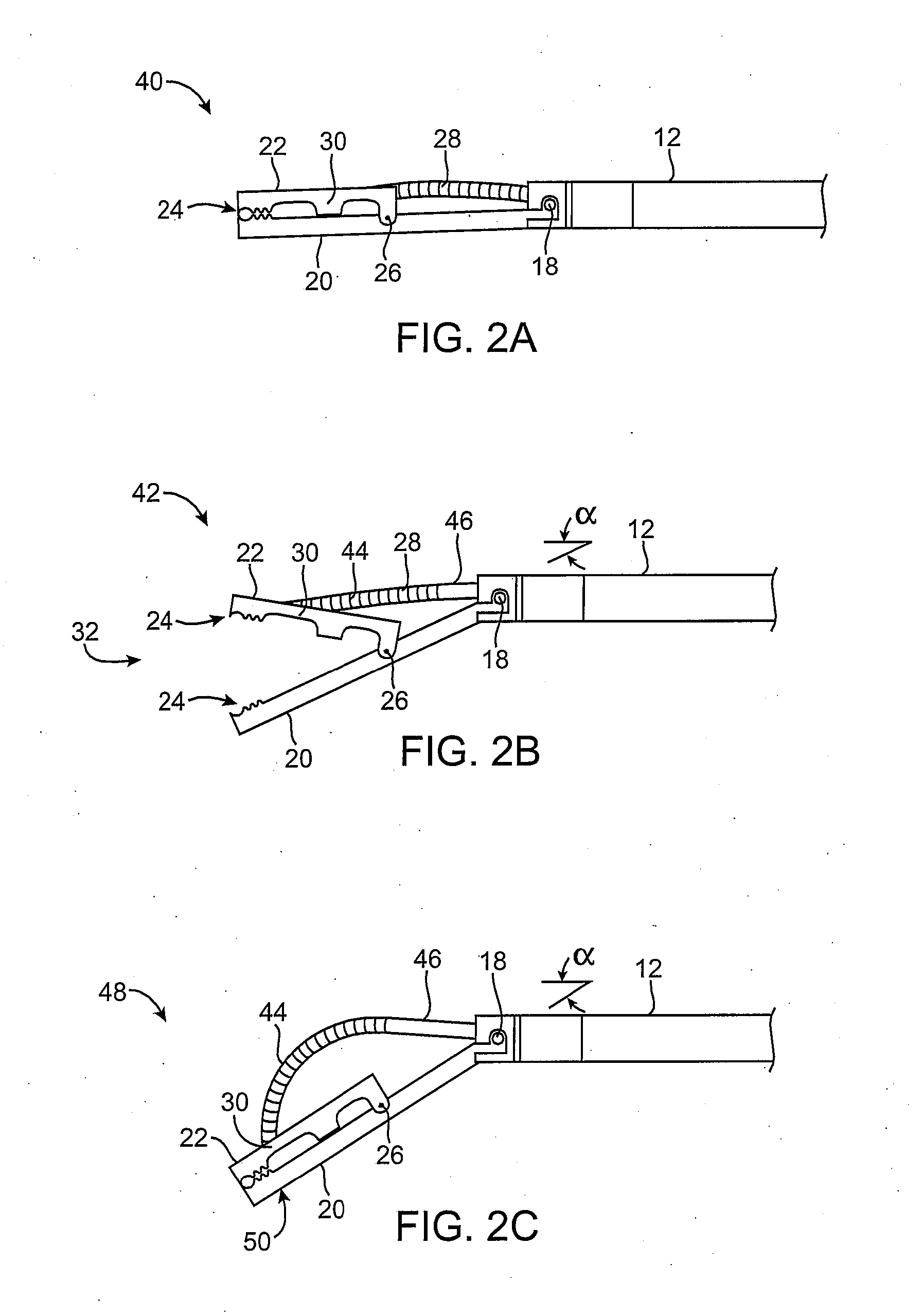Methods and apparatus for securing and deploying tissue anchors
a technology of tissue anchors and methods, applied in the field of methods and apparatus for securing and deploying tissue anchors, can solve the problems of atypical diarrhea, electrolytic imbalance, and many life-threatening problems
- Summary
- Abstract
- Description
- Claims
- Application Information
AI Technical Summary
Benefits of technology
Problems solved by technology
Method used
Image
Examples
Embodiment Construction
[0061] In manipulating tissue or creating tissue folds, a having a distal end effector may be advanced endoluminally, e.g., transorally, transgastrically, etc., into the patient's body, e.g., the stomach. The tissue may be engaged or grasped and the engaged tissue may be manipulated by a surgeon or practitioner from outside the patient's body. Examples of creating and forming tissue plications may be seen in further detail in U.S. patent application Ser. No. 10 / 955,245 filed Sep. 29, 2004, which has been incorporated herein by reference above, as well as U.S. patent application Ser. No. 10 / 735,030 filed Dec. 12, 2003, which is incorporated herein by reference in its entirety.
[0062] In engaging, manipulating, and / or securing the tissue, various methods and devices may be implemented. For instance, tissue securement devices may be delivered and positioned via an endoscopic apparatus for contacting a tissue wall of the gastrointestinal lumen, creating one or more tissue folds, and dep...
PUM
 Login to View More
Login to View More Abstract
Description
Claims
Application Information
 Login to View More
Login to View More - R&D
- Intellectual Property
- Life Sciences
- Materials
- Tech Scout
- Unparalleled Data Quality
- Higher Quality Content
- 60% Fewer Hallucinations
Browse by: Latest US Patents, China's latest patents, Technical Efficacy Thesaurus, Application Domain, Technology Topic, Popular Technical Reports.
© 2025 PatSnap. All rights reserved.Legal|Privacy policy|Modern Slavery Act Transparency Statement|Sitemap|About US| Contact US: help@patsnap.com



